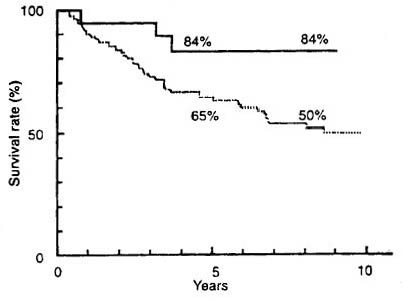
Cirrhosis survival rates dropped markedly among hospitalized vs. ambulatory patients
 Cirrhosis survival rates dropped markedly among hospitalized vs. ambulatory patients
Cirrhosis survival rates dropped markedly among hospitalized vs. ambulatory patients
Ratib S. Hepatology. 2014;60:282-289.
NOTE: This is hardly surprising. Once someone is admitted to hospital their diet consists of hospital food. Patients with cirrhosis are most often malnourished and putting them on a hospital diet is like a kiss of death. When are people going to learn that correct diet is fundamental to recovery from disease??!
Craig
Emergency hospitalization for cirrhosis signaled a substantial decline in patient life expectancy regardless of the patient’s disease stage, according to recent study results.
Researchers at Britain’s University of Nottingham examined Britain’s Clinical Practice Research Datalink and English Hospital Episode Statistics to identify 5,118 adult cases of cirrhosis from January 1998 to December 2009. Using a multivariate Cox-proportional hazards model adjusted for Baveno IV stage of cirrhosis, age, etiology and sex, researchers estimated 1- and 5-year survival rates for patients who were ambulatory (n=2,698) at diagnosis and for those diagnosed after an emergency hospital admission (n=2,420) for a liver-related cause.
Patients receiving ambulatory care for cirrhosis were found to have an 84 percent chance (95% CI, 0.83-0.86) of surviving for 1 year and a 66 percent chance (95% CI, 0.63-0.68) of surviving for 5 years. Five-year survival for these patients was comparable to that of patients with bladder cancer, investigators wrote.
“In contrast, once a patient is hospitalized for an emergency, their survival drops markedly,” the researchers said. Hospitalized patients had only a 55 percent chance (95% CI, 0.53-0.57) of living through the next year and a 31 percent chance (95% CI, 0.29-0.33) of survival through the next 4 years.
Compared with the ambulatory cohort, hospitalized patients or those diagnosed with liver disease beforehand had an independently greater risk for death (HR=2.78; 95% CI, 2.53-3.06) when adjusting for sex, age, etiology and disease stage.
“We have shown that an emergency hospitalization predicts a poorer prognosis irrespective of disease stage, and conversely that patients have a relatively good outcome whilst ambulatory,” the investigators concluded. “This finding suggests that liver disease could be managed more intensively in an outpatient or day case setting, which might reduce emergency admission, with the hope of ultimately improving the survival experience of cirrhotic patients.”